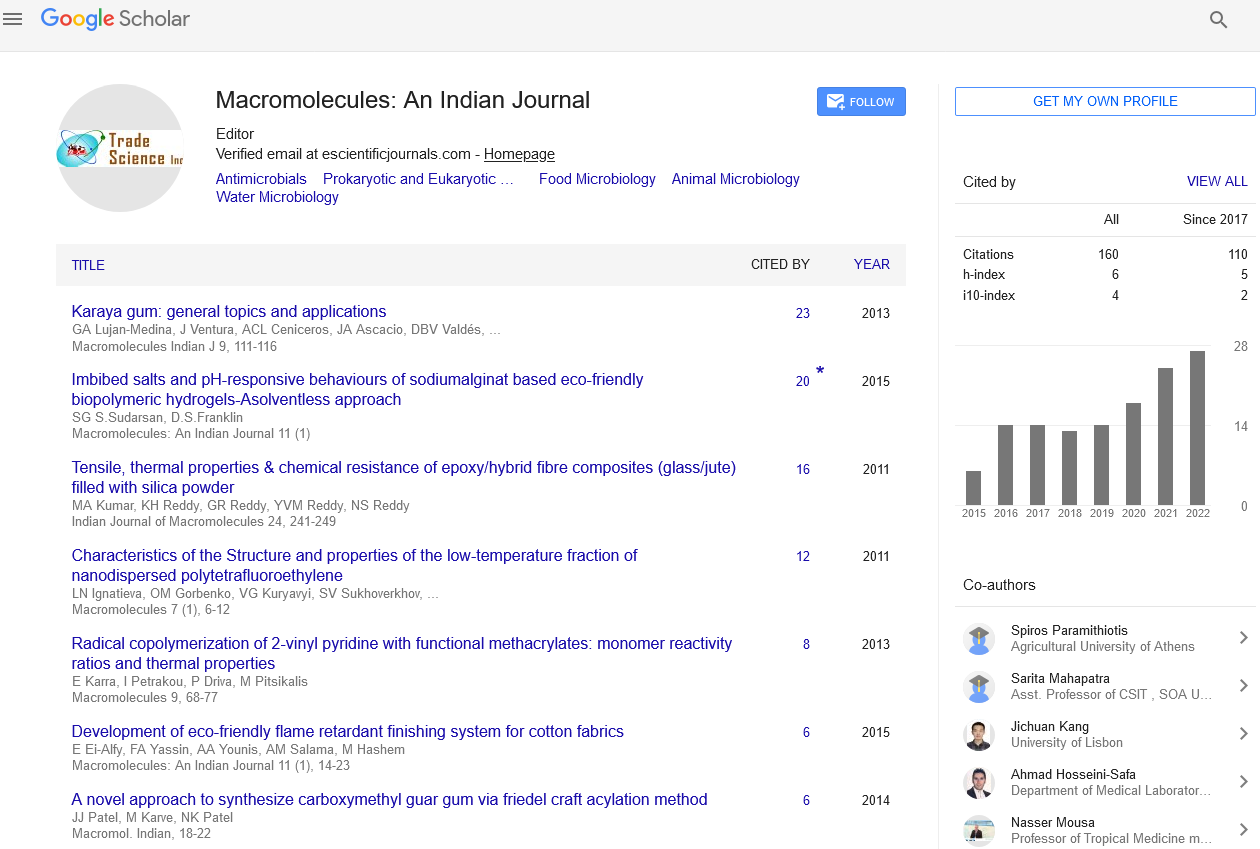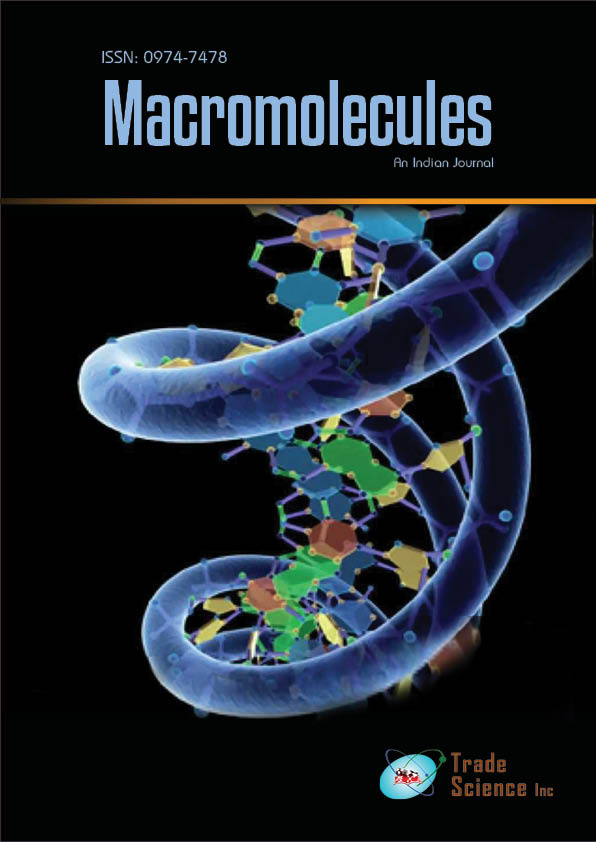Review
tsm, Volume: 12( 1)Attributes of Different Water: A New Perspective
- *Correspondence:
- Bidwai V , Shalyatantra Department, Ayurved College, Pusad (MH), India, Tel: (07233) 48627; E-mail: vihar4u@gmail.com
Received: April 4, 2017; Accepted: April 17, 2017; Published: April 22, 2017
Citation: Bidwai V, Chawardol V, and Bodade D. Attributes of Different Water: A New Perspective. Macromol Ind J. 2017;12(1):101.
Abstract
People are today very much concerned about the food they eat, the amount of vitamins and minerals they consume. Water is part of environment i.e panchamahabhuta which constitutes the human body. But little emphasis is placed in quality of water in Ayurvedic classics, while dealing with Jala-varga. Acharyas have distinctly mentioned properties of water with various sources, seasonal variations in property, properties of water according to receptacle, method of storage of water, cause of water pollution, methods of purification, methods of cooling, attributes of potable water, warm water, cold water etc. Water is one of the most precious substances on earth. It covers over 70% of the earth's surface and is very important resource to people and the environment. It has been observed that due to industrialization and urbanization our water sources are getting contaminated, resulting severe environmental hazards and it directly affect the human health.
Keywords
Water; Vitamins; Minerals; Human health
Introduction
Earth's surface, covering about 70% of the planet and constitutes 60% to 70% of the living world. In nature, water exists in liquid, solid, and gaseous states. It is in dynamic equilibrium between the liquid and gas states at standard temperature and pressure. At room temperature, it is a tasteless and odorless liquid, nearly colorless. Many substances dissolve in water and it is commonly referred to as the universal solvent. Water appears in nature in all three common states of matter (solid, liquid, and gas) and may take many different forms on Earth. Water vapor, clouds in the sky, sea water in the oceans, iceberg and glacier in the polar oceans and the liquid in aquifers in ground (Table 1).
| Rasa | Avyakta (Anthareekshajam), Madhura (Samanyajam) |
| Guna | Laghu, Snigdha |
| Veerya | Seeta |
| Vipaka | Madhura |
Table 1: Properties of water[1,2].
Anthareekshajala or water from the sky is tasteless, and having properties like nectar, vital for life, satiating, maintains the body, invigorating and allays tiredness lethargy, thirst, intoxication, fainting, drowsiness, sleep and burning sensation and is always highly beneficial. According to Charakacharya entire water is ultimately of one type and properties vary according to time and space. By nature, rain water has qualities like coldness, purity, benevolence, pleasantness and clearness (Tables 2 and 3) [3].
| Panchamahabhoothas | Taste of water |
|---|---|
| Prithwi | Sour and salt |
| Jala | Sweet |
| Agni | Acrid and bitter |
| Vayu | Astringent |
| Aakasa | Unmanifested |
Table 2: Taste of water according to Panchamahabhoothas[4].
| Nature of Earth | Properties of water |
|---|---|
| Fall on white earth | Astringent |
| Fall on yellowish white earth | Bitter |
| Fall on brown earth | Alkaline |
| Fall on saline soil | Saline |
| Fall on mountain valley | Pungent |
| Fall on black soil | Sweet |
Table 3: Effect of receptacle on rain water.
Water from the sky
Anthareekshajala or water from the sky is of four types. Dhara (rain water), Kara (hail water), Thoushara (dew) and Haima (snow water). Out of them rain water is the best due to laghuthwa (lightness). This again is of two types, Ganga and Samudra. Theganga water usually falls in the month of aswina (last period of rains). There is a test to identify ganga water. A lump of well-cookedsali rice which, should be kept outside in a silver utensil while it rains; if it remains as such after one muhoortha, it should be understood that ganga water is raining. If the colour changes in sali rice, samudra water may be raining. Samudra water if collected in the aswina month becomes lideganga water. Further ganga is the best and that should be collected during aswina.
This type of water collected from the end of a spread out clean and white cloth and kept in gold, silver or earthen pots. During its unavailability, water from the earth should be used. Charakacharya called it as aindra. These are of seven types viz. Koupam (water from well), Naadeyam (from river), Saarasam (natural lake), Thaadaagam (artificial lake), Prasravanam (spring), Oudbhidam (a fountain), Choundyam (improperly built well). Vagbhatachary also mentioned the types with an additional source as Vaapi (well with steps) (Tables 4 and 5).
| Source | Properties |
|---|---|
| Koupa | Kshara, Deepana, Pittakrit |
| Saarasa | Madhura, Laghu |
| Thaadaga | Guru, Vatakrit |
| Choundya | Pittakrit |
| Prasravana | Doshahara |
| Oudbhida | Madhura, |
| Vaapi | Madhura, Laghu |
| Naadeya | Katu, Rooksha, Vatakrit |
Table 4: Different sources of water and their properties.
| Varsha | Anthareeksha and Oudbhida-Mahagunatwat |
| Sarat | Sarvjala-Prasannatwat (clear) |
| Hemanta | Sarasa, Tadaaga |
| Vasanta | Kaupa, Prasravanam |
| Greeshma | Kaupa, Prasravanam |
| Pravrut | Choundyam ? Anavam |
Table 5: Seasons in relation to the type of water to be used [4].
Attributes of potable water/Ideal water
That water is of good quality which is odorless, tasteless, which quenches thirst, pure, cool, transparent, light, and pleasant. The water which is slightly astringent and sweet in taste, exceedingly thin, non-slime, light, soft and non-greasy is best to be taken (Tables 6-8).
| Varsha | Heavy and greasy |
| Sarath | Thin light, non-greasy.Person with tender body constitution and those who are accustomed to unctuous food are advised to use this water. |
| Hemanta | Unctuous, aphrodisiac, strength promoting, heavy |
| Sisira | Light, alleviate vataandkapha |
| Vasanta | Astringent and sweet, unctuous |
| Greeshma | Not greasy |
Table 6: Effect of season on water.
| River water flowing westwards | Beneficial due to lightness |
| River water flowing eastwards | Not commendable due to heaviness |
| River water flowing southwards | Not too bad due to moderate qualities |
| River originating from Sahya mountain | Cause skin lesions |
| River originating from Vindhya mountain | Skin lesion and anaemia |
| River originating from Malaya mountain | Worm infestations |
| River originating from Mahendra mountain | Elephantiasis, abdominal, enlargements, |
| River originating from Himalaya mountain | Cardiac disorders, oedema, headache, elephantiasis, Goiter |
| River originating from Avanti region | Piles |
| River originating fromPariyatra region (Western Vindhya) |
Beneficial, produce strength and health |
| Fast flowing rivers | Not muddy, light |
| Slow flowing rivers | Heavy |
| From desert | Bitter, salty, light, sweet, aphrodisiac and healthy |
Table 7: Characteristics of River water from different sites.
| River water | Increases vata, hard, appetizer, light and antiobestic, but if it is sweet, denser and heavy it is hydrating and increases kapha |
| Water from natural lake | Quenches thirst, tonic, astringent, sweet and light |
| Water from artificial lake | Increases vata, sweet, astringent, and acid. |
| Tank water | Eliminates vata and kapha, alkaline, acrid, and increases pitta |
| Well water | Salty, increases pitta, eliminates kapha, appetizer and light |
| Well water without Masonic work | Increases digestive power, hard and sweet and does not increase kapha |
| Spring water from falls | Eliminates kapha, appetizer, light and pleasant |
| Spring water | Sweet, alleviates pitta and does not causes indigestion associated with acid eructation |
| Water from sand pits | Acid, alkaline, eliminates kapha, light, appetizer |
| Water from fallow land | Sweet after digestion, heavy and increases doshas |
| Water from marshy places | Increases doshas |
| Sea water | Fleshy odour, salty, and increases doshas |
| Water from swampy region | Bad qualities, hygrating, not recommended |
| Water from dry regions | Harmless |
| water from ordinary regions | Quenches thirst, no burning sensations, pleasant, appetizer, sweet, cool and recommended for use |
Table 8: Properties of water from different sources.
According to Acharya Sushrut the water which does not spill out during boiling, which is free of froth, is clean, light and reduced to one fourth quantity after boiling is said to be Ideal [4].
Attributes of warm water
Warm water mitigates kapha, medas and vata, kindles digestion, cleanses the urinary bladder, cures dyspnoea, cough and fever and suited to health at all times.
Attributes of cold water
Cold water is ideal for use in fainting, aggravation of pitta, increases of body heat, burning sensation, poison, aggrevation of blood, alcoholic intoxication, giddiness, exhaustion, delusion, vomiting and bleeding from router [1,2,4-6].
Attributer of coconut water
Coconut water is unctuous, sweet, cold, and good for heart, kindles digestion, cleanses the urinary bladder, aphrosidiac, heavy, mitigates pure and cure severe thirst.
References
- AshtangaHridayaSutrasthan chapter 5/1-19 of Vagbhata with SarvangaSundari commentary of Arunadatta and Ayurveda Rasayana commentary of Hemadri, 1996 Krishnadas Academy, Varanasi.
- AshtangaSangrahaSutrasthachater 6/1-51 with Sasilekha Commentary of Indu, edited by Late Dr. PanditRao, VaidyaAyodhyaPandey, MaulikaSiddhantaVibhaga, 1991, Gujarat Ayurveda University, Jamnagar, Central Ayurveda and Siddha Research Institute, New Delhi.
- CharakaSamhitaSutrasthan chapter 27/117-216 with Ayurveda Deepika commentary of Chakrapani edition, 1995, MunshiramManoharlal Publishers Pvt. Ltd., Delhi.
- SushruthaSamhithaSutrasthan chapter 45/1-46 with NibandhaSangraha commentary by Dalhana and NyayaChandrika commentary by Gayadasa, edited by Sri YadavjiTrikamjiAcharya and Narayana Ram Acharya, Krishnadas Academy, Varanasi
- Shabdakalpadruman by Sri Raja Radhakantha Deva, Vol: I ? V, RashtriyaSanskritaSamsthan, New Delhi.
- Yogratnakara, Purbardha chapter-sitoushnavariguna/page (93-96) Vidyotinihindhi commentary by Vaidya Sri LaxmiPatiShastri, ChaukhambhaSanskritaSamsthan, Varanasi

